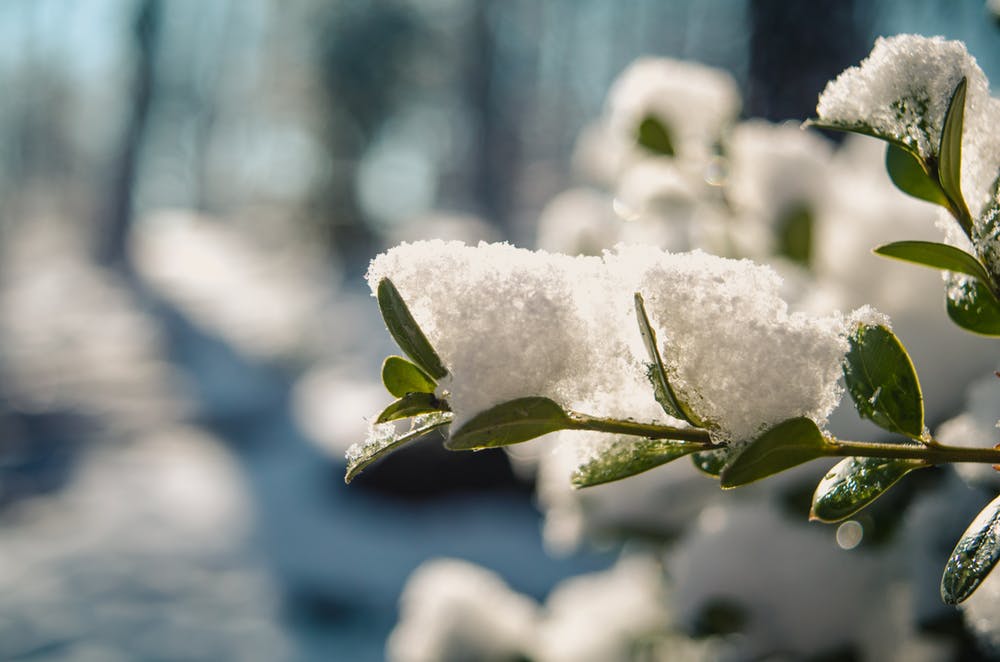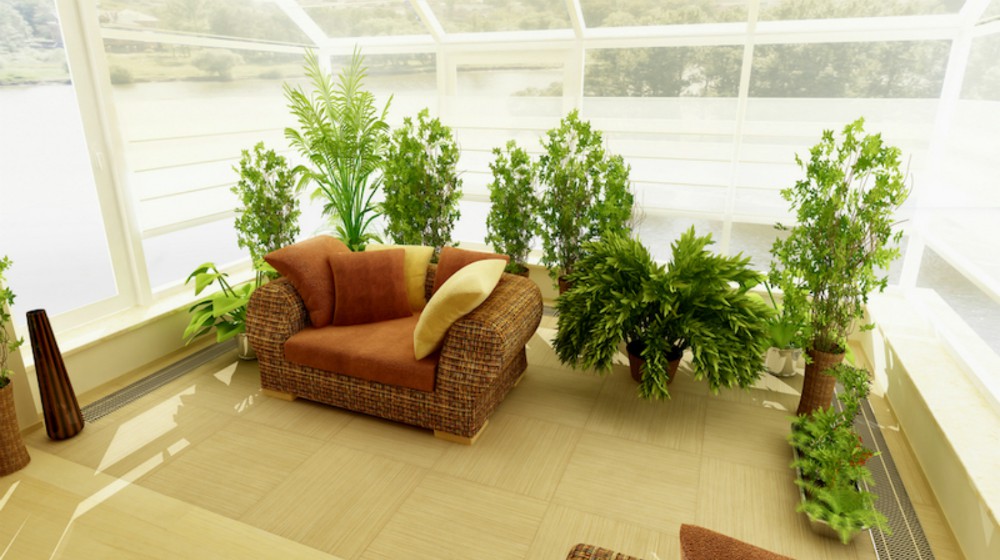With an indoor winter garden, it may be freezing cold outside but still green and vibrant inside. Find out how you can continue to grow and enjoy your favorite fruits and vegetables beyond the growing season!
RELATED: Winter Garden Tasks That You May Do During Cold Season
In this article:
- What You Need to Know About Indoor Winter Garden
- Where to Grow an Indoor Winter Garden
- What Crops to Grow in an Indoor Winter Garden
- Things to Consider in Indoor Winter Gardening
Grow Food All-Season With An Indoor Winter Garden
What You Need to Know About Indoor Winter Garden
Indoor winter gardening for me was basically keeping my indoor agave and jade plants happy. But to actually grow food to supplement the lack of fresh vegetables of the season is a huge undertaking, costly even.
An expensive greenhouse complete with a heating system has to be maintained to continue growing food crops in winter. However, I’ve learned that we don’t need to spend big bucks to enjoy fresh and organic vegetables in winter.
Check out these indoor winter gardening ideas I’m going to share with you!
Where to Grow an Indoor Winter Garden

Whether you live in an apartment or have an extra-wide lawn and garden space, winter will leave you with few options, or so it will seem.
1. Under Indoor Grow Lights
Water, nutrients, and light are exactly what plant needs to grow. However, light is scarce during winter which means it needs to be sourced somewhere else. Make this DIY indoor grow lights as an alternative to the expensive fancy store-bought ones.
2. In a South Facing Window Sill
Make a curtain of edible plants in the south-facing windows of the house. The thought of that may be a little off especially if vegetables are not exactly your idea of ornamental plants.
But in the winter, I’d prefer them over cactus when I can have fresh and free veggies later on.
3. High Tunnel Winter Gardening
If you want more vegetables to grow, then you’ll definitely run out of space inside your home. Before the thought of an expensive greenhouse upset you, check these high tunnel gardening ideas.
High tunnels are also called the poor man’s greenhouse so it won’t make a huge cut in your budget. And the return will be all worth it.
You can grow bulky brassica vegetables in the greenhouse such as cabbages, broccoli, and brussels sprouts.
4. In a Mudroom
From my own experience, a mudroom is such an all-purpose room, I’ve practically transformed mine into a mini greenhouse. I can’t fill the rest of the house with plants so the mudroom is practically sort of a nursery.
5. Hydroponics Indoor Gardening
Hydroponics is an unconventional approach to vegetable gardening. But if you don’t want the mess of soil indoors, you can try and grow vegetables and fruits in an aquatic system. Find more about hydroponics here.
6. Indoor Container Gardening
What’s great with container gardening is the mobility of these planters. Before it gets frosted, you have the option to move it indoors.
If sunlight is insufficient in a window, they can be moved under grow lights. Even fruit trees like lemon can be grown and planted in containers and make great indoor plants.
What Crops to Grow in an Indoor Winter Garden
Fruits and vegetables to grow indoors in winter are plenty, in fact, you’d run out of space when you try to plant them all. Check these plants you can grow indoors and more plant ideas as you read on.
1. Kitchen Vegetable Scraps
For the gardening beginners out there, you can try this gardening experiment you can do in winter. The sight of growing things with so much as putting a lettuce stump in a basin of water will surprise you.
Check these kitchen vegetable scraps you can regrow into more food. Any of these will help you to grow more soon.
2. Indoor Herb Garden
Herbs are probably the most foolproof vegetables when it comes to indoor gardening. Perennial herbs such as lavender and rosemary are cold hardy but your favorite basil should be safe indoors if you want a winter supply.
Grow a successful indoor herb garden with these tips and ideas.
3. Salad Greens
Lettuce, spinach, arugula are better tasting when they are served a few minutes after harvested. Growing lettuce indoors is so easy, you won’t have an excuse.
4. A Salsa Garden
Although tomatoes and peppers are commonly summer plants, they’ve been forced to grow beyond the season. Why not, when they’re better fresh? Growing pepper much like growing tomatoes in containers is viable.
Onions take a longer time to grow and better in containers where they can be transferred indoors once winter comes.
5. Mushrooms
It’s no secret, mushrooms are in season in the cold fall to the early spring season. They’re the best vegetables to grow in the winter season when no light is needed to grow them.
All you need is a dark and damp area for mushrooms to grow which the basement will amply provide. Any of these mushroom varieties will give you a few troubles when it comes to indoor gardening.
6. Seed Sprouts

What’s great with saving seeds in the fall harvest is how some seeds can be grown into tasty vegetables or sprouts in as early as three days. Mung bean sprouts are some of my favorites but you can also sprout alfalfa, peas, lentil, and radish for fresh vegetables in winter.
7. Root Crops
Root vegetables like carrots, potatoes, beets, and radishes may seem unlikely crops for an indoor garden. But considering they grow well in containers, then that makes them great for indoor gardening.
8. Fruits

Although strawberry is the perfect fruit to grow in winter ’cause it grows well indoors, there are a few more you can grow indoors. You can grow fruits from seeds indoors like avocado, apples, and apricots.
RELATED: How To Store Seeds From Your Very Own Harvest
Things to Consider in Indoor Winter Gardening
These pointers are not meant to discourage you from growing an indoor garden. Instead, these are guidelines to help you successfully grow your plants indoors during the cold winter season.
1. Fertilizer
Depending on the plant requirement, indoor plants will need extra fertilizers. They won’t have any other source of vitamins unlike when they’re grown outdoors directly in the ground. Organic fertilizers in the form of compost tea will make an application for indoor plants easier.
2. Pollination
Pollinators such as bees and birds will not be available indoors. Although fruits and vegetables such as pepper, tomatoes, and strawberries are self-fertile, they could use a helping hand.
Give your indoor plants a gentle shake when the flowers develop. Or you can use a small paintbrush and manually distribute pollen among the flowers.
3. Water and Drainage
Since the air indoor is drier in winter, keeping the plants moisturized will be a bit of a challenge. A humidifier can be added to a growing room but misting the plant to keep them moisturized is a must.
Don’t overdo it, though, to avoid mold build-up and rotting. As long as the plants are well-ventilated, your indoor plants are good to go.
4. Maintainance and Sanitation
If you are worried about the cost of maintaining an indoor garden in winter, just think of the fresh vegetable and fruits you’ll have during this dry and cold season. You can use cost-saving tips such as adding reflectors to your indoor grow lights, checking your insulation so the temperature inside your home can be easily regulated, and avoiding to put plants in carpeted rooms because it builds up bacteria.
Check out this video by GrowVeg for more indoor winter garden ideas and tips:
If you ask me, growing an indoor garden is worth the trouble, effort, and money as compared to just buying fruits and vegetables in the market! Plus it could be a survival gardening skill you can learn. It’s not too late to grow fruits and veggies indoors, so get to your indoor winter garden now!
Were these indoor winter gardening tips and ideas helpful? I’d be delighted to know all about your indoor winter gardening ideas in the comment section below.
UP NEXT
- 15 Fall And Winter Garden Activities You Must Do
- Container Gardening Tips For The Winter Season
- How To Make DIY Rainbow Roses
While you can keep growing food in winter, you can also keep your garden landscape vibrant with these winter garden flowering plants.
Don’t forget to follow us on Facebook, Instagram, Pinterest, and Twitter for more gardening ideas!
Editor’s Note: This post was originally published on September 2, 2019, and has been updated for quality and relevancy.



